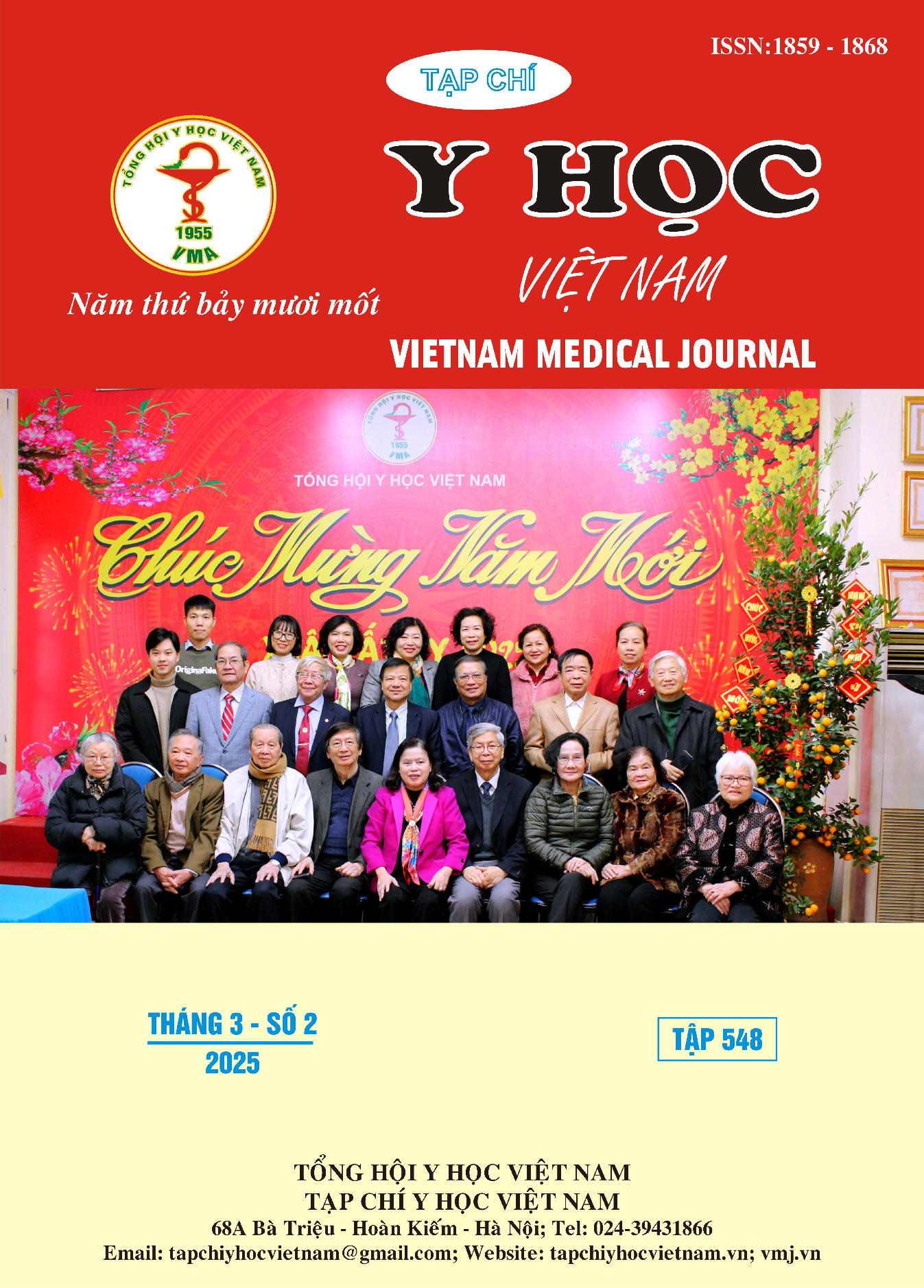CHARACTERISTICS OF CHILDREN WITH WHOOPING COUGH TREATED AT THE NATIONAL CHILDREN'S HOSPITAL
Main Article Content
Abstract
Objective: Describe the characteristics of children with pertussis treated at the National Children's Hospital. Subjects and methods: Children under 16 years old were diagnosed with pertussis by real-time PCR, and treated at the National Children's Hospital from January 2019 to December 2020. Results: The majority of children with whooping cough hospitalized were children under 4 months old (75.7%), the rate of boys with pertussis was higher than that of girls (male/female ratio ≈ 1.23/1). Most children with whooping cough were unvaccinated, accounting for 85.9% (328/382). The number of whooping cough cases is scattered throughout the year, however, the disease tends to be lower in the winter months. The most common day for Real-time PCR testing for whooping cough was the 10th day, with an average of 12.4 days. 23.6% (90/382) of children with whooping cough had co-infections with microbial pathogens, mainly viral co-infection 70.0% (63/90), bacterial co-infection 40.0% (36/90) and fungal co-infection 1.1% (1/90). Notably, 17.8% (16/90) of children had superinfections with at least 2 microbial pathogens. Conclusion: The majority of children with whooping cough hospitalized were children under 4 months old, and had not reached the age of vaccination. The rate of children with whooping cough is predominant viral co-infection. Real-time PCR technique is meaningful in the early diagnosis of whooping cough in children.
Article Details
Keywords
whooping cough, children, real-time PCR
References
2. Thành quả chương trình tiêm chủng mở rộng. , accessed: 12/17/2021.
3. Báo cáo tổng kết Tiêm chủng mở rộng năm 2018 - Viện Vệ sinh dịch tễ trung ương.pdf. .
4. Cherry J.D., Tan T., Wirsing von König C.-H., et al. (2012). Clinical Definitions of Pertussis: Summary of a Global Pertussis Initiative Roundtable Meeting, February 2011. Clin Infect Dis, 54(12), 1756–1764.
5. Lê Thanh Hải (2020). Bệnh ho gà. Hướng dẫn chẩn đoán và điều trị bệnh trẻ em. Bệnh viện Nhi Trung ương, 262–267.
6. Lanotte P., Plouzeau C., Burucoa C., et al. (2011). Evaluation of Four Commercial Real-Time PCR Assays for Detection of Bordetella spp. in Nasopharyngeal Aspirates ▿. J Clin Microbiol, 49(11), 3943–3946.
7. Đỗ Thiện Hải, Dương Thị Hồng, Đỗ Thúy Nga, Hoàng Thị Thu Hà H.Y. học dự phòng V. (2016). Đặc điểm dịch tễ học lâm sàng bệnh ho gà ở trẻ em được chẩn đoán ho gà tại bệnh viện Nhi trung ương, giai đoạn 2012 – 2014. Tạp chí Y học Dự phòng, 6(179), 35–41.
8. Phạm Thái Sơn, Trần Ngọc Xuân, Phạm Thị Thuỳ Dung, Nguyễn Kim Thuỳ, Lê Việt Cường, Nguyễn Hoàng Phương Anh, Đỗ Châu Việt H.Y. học dự phòng V. (2019). Đặc điểm dịch tễ học, lâm sàng, cận lâm sàng và điều trị ở bệnh nhi mắc ho gà nằm tại viện Nhi Đồng 2, thành phố Hồ Chí Minh năm 2018. Tạp chí Y học Dự phòng, 29(11), 69–76.
9. Valle-Mendoza J., Silva-Caso W., Aguilar-Luis M.A., et al. (2018). Bordetella pertussis in children hospitalized with a respiratory infection: clinical characteristics and pathogen detection in household contacts. BMC Res Notes, 11.


